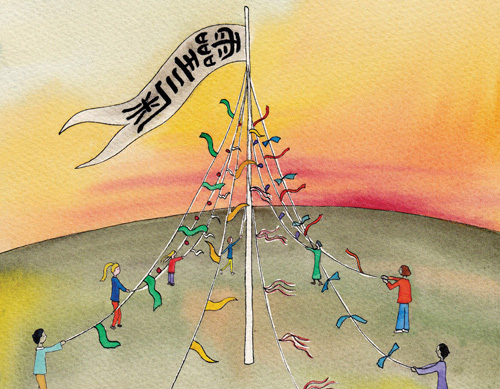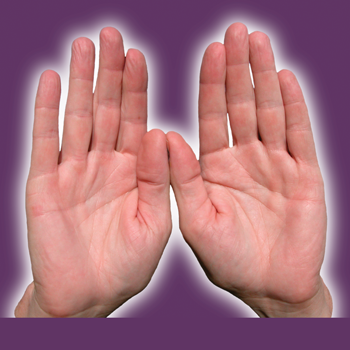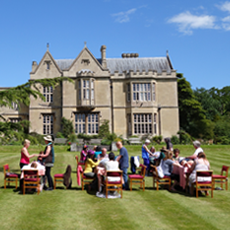by William Lee Rand
This article available in PDF format.
Feel free to pass the pdf version on to your friends.
 The practice of Reiki has come a long way since Usui Reiki Ryoho (1) was introduced in 1922.(2) After its introduction and development by Usui Sensei, it was further developed at Usui Sensei's request by his student, Hayashi Sensei,(3) who in turn passed it to Takata Sensei who added her own developments.(4) This resulted in the two main branches of Usui Reiki we have today, the Japanese style based on the teachings of Usui Sensei and Hayashi Sensei and the Western style as taught by Takata Sensei. Takata Sensei trained twenty-two Masters and after her transition in 1980, those Masters along with many others passed Reiki on to people all over the world.(5)
The practice of Reiki has come a long way since Usui Reiki Ryoho (1) was introduced in 1922.(2) After its introduction and development by Usui Sensei, it was further developed at Usui Sensei's request by his student, Hayashi Sensei,(3) who in turn passed it to Takata Sensei who added her own developments.(4) This resulted in the two main branches of Usui Reiki we have today, the Japanese style based on the teachings of Usui Sensei and Hayashi Sensei and the Western style as taught by Takata Sensei. Takata Sensei trained twenty-two Masters and after her transition in 1980, those Masters along with many others passed Reiki on to people all over the world.(5)
After Takata Sensei’s passing, many variations of Reiki were created resulting in the development of new styles of Usui Reiki as well as new types of Reiki derived from channeled sources.(6)
Having different styles of Reiki to choose from can be seen as beneficial to the practice as it provides greater choice, thus allowing students to study and practice a style that feels most well suited to their temperament, their purpose and their sense of inner guidance.
While having many styles of Reiki to choose from is beneficial, if people begin to strongly identify with the style of Reiki they practice they will sometimes have the tendency to become isolated from those who practice a style different than their own. This can sometimes allow the unhealthy tendency for some to begin thinking that the style of Reiki they practice is the best style for everyone and that there is something inferior and wrong with other styles. In marketing, this is called brand identification. As an example, people begin thinking that the brand of car, cell phone or computer they own is the only good brand. And while there may be positive qualities to the brand they identify with, it doesn’t mean it’s the only good brand available. Brand identification is good for the brand as it increases sales, but it prevents the customers from seeing their brand and the other brands clearly. This bias toward their brand limits their choices in an unhealthy way and can prevent them from making use of another brand that might be a better fit. When this happens with Reiki, students become closed off from the unique features of other styles and not only does this prevent them from trying another style, they are also unable to decide if it would be beneficial to apply any of the innovations in use with other styles to their own style.(7)
The right style of Reiki for a person to use
is the style that he or she has chosen to use.
This situation can become even more complicated in that isolation from other groups can sometimes breed distrust and fear of competition. People begin to fear that there aren’t enough clients or students to go around and that “those other Reiki people” are taking clients and students that belong to them. This attitude can spiral out of control, resulting in negative things being said about the Reiki practitioners who belong to other groups. This sort of thing isn’t healthy and can be detrimental to those who do it, as one of the things that prospective clients and students dislike most about Reiki Masters is when they say negative things about other Reiki Masters. People want to get involved with Reiki because they feel it to be a source of harmony and peace, but if they see Reiki people saying negative things about each other, it creates the opposite image and can motivate potential clients and students to find a Reiki Master who doesn’t say negative things about other Masters or even to begin looking into healing practices other than Reiki to fulfill their needs.
My purpose in focusing on this issue is to bring it into clearer awareness so that it can be dealt with and healed in order to build a stronger Reiki community. However, I know that many Reiki people in various areas around the country and the world don’t have this problem. They have a vital, strong and openly accepting Reiki perspective that honors all schools, lineages and styles. They are to be commended for this. The ideas in this article are intended for Reiki people who haven’t considered this perspective so they can decide if they’d like to go in this direction.
Lack of open, friendly communication between people from different Reiki schools, lineages or styles can be detrimental for a number of reasons. Psychological studies indicate that diversity creates a greater level of creativity, improves innovation and problem-solving ability. According to an article in Scientific American, “The key to understanding the positive influence of diversity is the concept of informational diversity. When people are brought together to solve problems in groups, they bring different information, opinions and perspectives.(8) This concept applies to people from different schools of Reiki, as the diversity of styles would open people’s minds to different ways to solve common problems or to achieve mutually beneficial goals.
Another possibility to consider is that when we include all Reiki people regardless of school, lineage or style we open ourselves to a much larger group of people who can work together to promote the overall good of Reiki. This happened to the group of Reiki people around Louisville, Kentucky in the mid-90s. The Reiki people there practiced different styles and generally, didn’t know each other and didn’t talk to each other. However, they often said negative things about each other and each seemed to have a generally negative attitude about anyone else in the area who practiced Reiki. In one incident, a Reiki Master’s brochures were removed by another Reiki Master from where they had been placed on display in a health food store and replaced with her own. Laurelle Gaia, the one who had her brochures removed, was aware of the negative attitude present in the Reiki community, and she decided to use Reiki to heal the problem. She teamed up with Kathie Lipinski and together they began sending Reiki to the situation. Things began to change. They made contact with the woman who had removed Laurelle’s brochures and were able to talk to her about the law of abundance and how there is always enough to go around. They organized a meeting of all the Reiki Masters in the area and held it at a neutral location. At the meeting they gave Reiki to each other and talked about the law of abundance and the value that can come from Reiki people working together in harmony. They made each person a leader of an activity such as leading a meditation, presenting a topic or organizing a Reiki exchange. They called themselves United in Healing, developed a mission statement and together sent Reiki to their mission. They realized that their fear of each other came simply from the fact that they hadn’t known each other. As soon as they got to know each other, the fear subsided and they began feeling good about being in the group and found value in working together.
With a large group of people, they had more resources than they had working alone. Because of this they were able to start a newsletter with articles on Reiki and ads for each teacher’s classes and sessions. They shared their contact lists with each other and used their combined list to send out their newsletter and advertise their classes. They got a booth at a health fair, did Reiki in a local hospital and gave Reiki presentations at local churches and for other groups. They held an open house, gave a Reiki talk and sessions and did Reiki marathons for seriously ill people. They also had a free Reiki clinic.
All of this activity created a tremendous amount of positive energy around their Reiki organization. This created lots of interest in Reiki and attracted large numbers of people for Reiki sessions and to take classes. Everyone’s Reiki businesses began to grow! On one weekend their members had 102 students in classes—far more than ever before. Not only did each member benefit, but so did the community they served as many more people were receiving Reiki sessions and getting Reiki training. Their experience demonstrates the power of overcoming the fear and distrust of other Reiki practitioners, transcending differences in Reiki styles and working together for the common good of the community.
In 1999 Arjava Petter invited me to write a book with him and Walter Lübeck. I had not met Walter so I traveled to Germany to spend a weekend with him, exchanging Reiki, going to a local sacred place and talking about the book we were to write. Later that year the three of us traveled to Japan to visit the Usui Memorial at Saiho temple and spent a day on Mt. Kurama. We also had a great time in Kyoto and had a chance to meet Hiroshi Doi. In January 2000, I invited Walter and Arjava to travel with me to India and teach classes. We taught in Delhi and also traveled to the sacred city of Haridwar, where we met with a guru, and then traveled on to Rishikesh. We greatly enjoyed each other’s company and even though we taught different styles of Reiki,(9) we respected each other and got along just fine. In this way, we got to know each other and to bond. And in fact, the different styles we practiced created a stimulating atmosphere that provided us with points of view the other had not considered. This allowed us to gain a deeper understanding of the essence of Reiki, which of course helped us with the book we were to write together. The Spirit of Reiki came out in 2001. It is still considered to be a classic Reiki book by many even now.
One of the most important things the student of Reiki can do if he or she wants to get the most from Reiki is to meditate on the essence of Reiki energy and get to know the qualities that dwell within it. Then invite the Reiki energy to heal your personality and your being so that you begin the process of embodying the qualities within the essence of Reiki energy. Some of these qualities are joy, peace, love, gratitude, forgiveness, humility, patience, confidence, productivity, abundance, optimism and well-being.
One of the most important qualities I’ve discovered is that Reiki honors free will. Reiki doesn’t force itself on someone; it only works if a client or student accepts the healing it offers. And this is the only requirement to receive Reiki; that one accept the gift. Because of this, Reiki works for anyone who is willing to receive a Reiki session or take a class. This means that it works for anyone regardless of the style of Reiki in use. The style is simply an outer trapping, a form, a way to organize the use of Reiki. The style isn’t the essence. If Reiki honors all people and all styles, then wouldn’t it be appropriate for you and me to do the same?
This is why we say that the right style of Reiki for a person to use is the style that he or she has chosen to use. If we honor this statement and then use Reiki to heal any resistance to it, we will easily be able to honor all Reiki styles that people practice. It also means we’ll have a natural curiosity about people who practice a different style of Reiki than our own. We’ll be able to talk with them, get to know and understand them and be able to work with them to achieve common goals.
I’ve recently been talking with Robert Fueston who is a member of the Reiki Alliance.(10) We’ve been talking about getting the leaders of each of the various schools of Reiki to begin interacting with each other so they can get to know each other. The idea is to talk one on one about our philosophy of Reiki, how we practice and teach and so forth so we can clear up any misunderstandings that might exist and be able to work with each other. I think just having open communication among us will create noticeable improvements in the energy of the Reiki community. But once this is happening perhaps we could have a meeting where we get together face to face. Then we could see if we can begin working on a project together.
One of the issues we could work on involves government legislation that unfairly limits the practice of Reiki or requires that one get a license to practice when there is no legitimate reason to license Reiki. As an example, there are a number of states that require Reiki practitioners to get massage licenses to practice Reiki. This makes no sense as Reiki isn’t massage and getting a massage license will not improve the quality of one’s Reiki practice. On the other hand, it creates an unfair burden on those wanting to practice Reiki, usually requiring hundreds of hours of instruction and costing thousands of dollars. This limits the number of Reiki practitioners potential clients have to choose from and limits the availability of Reiki to the general public. There is a known process for overturning this type of legislation that has been successfully carried out in a number of states, but it requires a well-organized effort by a large number of people to get it done.(11) This project would be more easily accomplished if the leaders of the major Reiki schools worked together on it.
There is also the possibility of other projects to further the purpose of Reiki that will become apparent as our energies begin working together. The important thing is that we start talking and see where it leads.
We live during such an important time when rapid change is taking place all around us. It’s important that we make the best use of Reiki that we can so it can guide us into healthy outcomes for ourselves and for the planet. May the essence of Reiki guide all that you do.
1 Usui Reiki Ryoho is translated to mean Usui Reiki Healing Method.
2 It’s important to understand that Usui Sensei didn’t create Reiki as there were other healing systems called Reiki being practiced in Japan around the time Usui Reiki Ryoho was introduced. However, Usui Reiki Ryoho is the origin of most of the Reiki systems that have spread around the world.
3 The development of Usui Reiki by Usui Sensei and Hayashi Sensei is explained in interviews with Hiroshi Doi. See: "Hiroshi Doi is Interviewed" and "Interview With Hiroshi Doi Sensei." These interviews are also featured in back issues of Reiki New Magazine.
4 Ibid. Her style featured a Master symbol, a different attunement for each level and the feature that the attunement empowered the symbols. This was a new development as Usui Sensei and Hayashi Sensei did not have a Master symbol, had just one attunement, which was done over and over and the attunement did not empower the symbols.
5 To read a detailed history of Reiki go to: What is the History of Reiki?.
6 With so many styles of Reiki being practiced, some wonder what constitutes a Reiki style. For a working definition of Reiki, please see: Reiki: A Working Definition.
7 Learning from the success of others is one of the most important things you can do to improve your Reiki practice. This can include improvements made to the way classes are organized, how material is presented and taught, how sessions and classes are advertised and marketed as well as how Reiki is applied in sessions and in everyday activities.
8 See How Diversity Makes Us Smarter at: http://www.scientificamerican.com/article/how-diversity-makes-us-smarter/
9 We taught our classes separately from each other.
11 The National Health Freedom Coalition has successfully guided Reiki groups to protect their right to practice without the need of government licensing. See www.nationalhealthfreedom.org.
This article appeared in the Spring 2015 issue of Reiki News Magazine.
This article available in PDF format. Feel free to pass the pdf version on to your friends.







